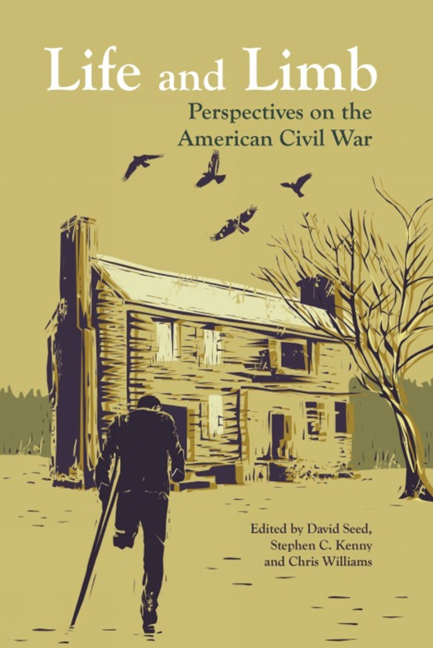Book contents
- Frontmatter
- Contents
- List of Illustrations
- Acknowledgements
- Introduction: Civil War Voices and Views
- MEDICAL AND SURGICAL MEMOIRS
- ACCOUNTS OF NURSING
- MEDICAL FACILITIES AND PATHOLOGY
- PHOTOGRAPHY
- AMPUTATIONS AND PROSTHETIC LIMBS
- IN THE FIELD OF BATTLE
- POST-WAR NARRATIVES
- ‘What I Saw of Shiloh’
- ‘The Coup de Grace’
- ‘A Resumed Identity’
- ‘Recollections of a Private’
- The Red Badge of Courage
- The Aftermath
- Contributors
- Select Bibliography
- Index
- Plates
The Red Badge of Courage
from POST-WAR NARRATIVES
- Frontmatter
- Contents
- List of Illustrations
- Acknowledgements
- Introduction: Civil War Voices and Views
- MEDICAL AND SURGICAL MEMOIRS
- ACCOUNTS OF NURSING
- MEDICAL FACILITIES AND PATHOLOGY
- PHOTOGRAPHY
- AMPUTATIONS AND PROSTHETIC LIMBS
- IN THE FIELD OF BATTLE
- POST-WAR NARRATIVES
- ‘What I Saw of Shiloh’
- ‘The Coup de Grace’
- ‘A Resumed Identity’
- ‘Recollections of a Private’
- The Red Badge of Courage
- The Aftermath
- Contributors
- Select Bibliography
- Index
- Plates
Summary
Stephen Crane (1871–1900) was born after the Civil War, but his most famous novel about that war was so realistic that some readers thought it was written by a veteran. The Red Badge of Courage was serialized in the Philadelphia Press in 1894 and published in book form in 1895. It was reissued in a longer version from Crane's manuscripts in 1982. Crane started the novel in 1893 after reading the ‘Battles and Leaders’ series in the Century magazine. The Red Badge of Courage presents an episode of the war but minimizes its historical reference. However, it has now been established that events in the novel correspond most closely with the unexpected defeat of the Union forces at the 1863 Battle of Chancellorsville in Virginia.
In Chapter 8 Henry Fleming's overwhelming impulse is to see the spectacle evoked by the sudden burst of noise from battle. When he finally does see the soldiers, the effect is grotesque from the disparate stream of images of these soldiers, an effect heightened by Crane's paragraphing. All those who pass before his wondering eyes are scarred in some way from the battle, so much so that injury has become the new norm. In contrast with the grandeur of the scenes in Fleming's imagination, there is no coherence in these sights, only a shared impulse of flight. The tattered soldier tries to engage Fleming in conversation but his innocuous enquiry about his injury reduces the youth to a panicky stammer and further flight. In a letter to John Hilliard, Crane expressed satisfaction with the reviewers’ recognition of his purpose to give a ‘psychological portrayal of fear.’
See also: Lee Clark Mitchell, ed., New Essays on ‘The Red Badge of Courage’ (Cambridge: Cambridge University Press, 1986); Perry Lintz, Private Fleming at Chancellorsville: ‘The Red Badge of Courage’ and the Civil War (Columbia, MO: University of Missouri Press, 2006); Red Badge of Courage website at http://www.redbadgeofcourage.org/; R.W. Stallman and L. Gilkes, eds, Stephen Crane: Letters (London: Peter Owen, 1960), p. 158.
Chapter 8
The trees began softly to sing a hymn of twilight. The sun sank until slanted bronze rays struck the forest. There was a lull in the noises of insects as if they had bowed their beaks and were making a devotional pause.
- Type
- Chapter
- Information
- Life and LimbPerspectives on the American Civil War, pp. 183 - 187Publisher: Liverpool University PressPrint publication year: 2015

